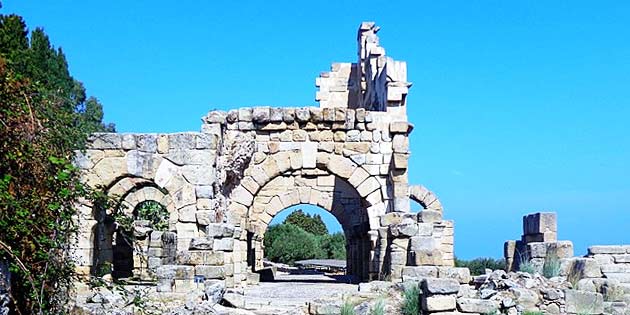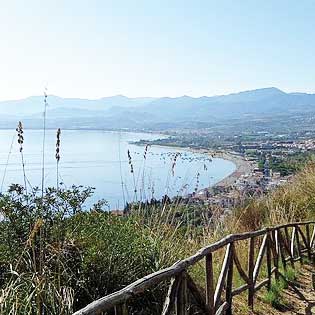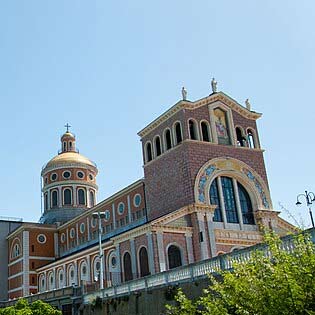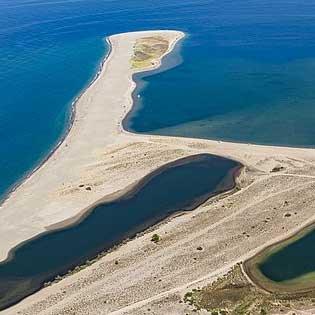Archaeological Area of Tindari

Effems - CC4.0
The archaeological area of Tindari was an ancient Greek-Roman city, Tyndaris, stands on the top of a rocky promontory, overlooking the Gulf of Patti.
It was founded by Dionysius of Syracuse in 397-6 BC and had the role of fortress and military outpost. It became independent during the fourth century BC, maintained alliance relations with Syracuse. During the First Punic War it welcomed a Carthaginian base, but in 254 BC he surrendered himself spontaneously to Rome, becoming civitas decumana, and enjoying autonomy and freedom. During the civil war between Sextus Pompeius and Octavian, around 40 BC, it was conquered by the latter. In the new administrative organization of the Sicilian cities wanted by Ottavio Augusto it became Colonia Augusta Tyndaritanorum. The city was then hit by a large landslide, in the early imperial age, and by an earthquake in 365 AD. In 836 it was conquered and destroyed by the Arabs.
The ancient city, which has an extension of 27 hectares, is surrounded by a wall of over 3 km built in the first half of the third century. B.C. and restored in Roman and Byzantine times. In the city the main urban axes, the plateiai and the decumani are still visible, intersected orthogonally by narrower streets that define blocks of almost constant width, insulae. The decumanus connected the main public buildings: the Gymnasium and the Theater.
The Gymnasium, known as the Basilica in Roman times, is a building erected in the late Imperial age, with three floors, of which only part of the lower one remains. It is a large nave with arches where the activity of the gymnasiarch Democritus is documented. The Basilica, with propylaeus leading to a porticoed square, was the seat of important official functions.
The Theater at the beginning of the third century BC, retains part of the monumental three-tiered scenic building dating back to the II - I century. B.C .. The theater was supported by the natural hollow conformation of the hill, in which the tiers of the seats of the cavea were dug, which had to reach a capacity of about 3000 seats. in the Roman imperial age it was subject to modifications to be adapted to circus games: the orchestra was transformed into an arena, surrounding the auditorium with a wall and removing the four lower steps.
Among the islands present in the city, only one has been fully explored, which has two aristocratic houses, a public spa complex and six shops, some with back rooms, facing the median decumanus, structures built in the second half of the second century BC. on houses of the fourth century. B.C. The two houses, built in the first century BC, on previous homes of the Timoleontean age, were subject to renovations and restorations in the imperial age, the floors decorated with colored marble tiles, in opus signinum, white tesserae on cocciopesto, and the polychrome mosaics , were replaced by other black and white figured mosaics. One of the houses has on the lower terrace a large peristyle with brick columns and an elegant polychrome mosaic floor and perspective of the second century. B.C. The second has a monumental entrance with two columns with Corinthian-Italic terracotta capitals and a large central atrium-peristyle with two orders of Doric columns.
The public baths date back to the middle imperial age. On the floors of the thermal rooms, black and white mosaics are developed where it is possible to identify the symbols of Tyndaris and the Trinacria, Dionysian scenes, marine creatures, datable between the end of the second and the beginning of the third century. A.D..
In the western sector of the city, reachable by descending from the theater along the median decumanus, a domus dating back to the end of the 1st century has been unearthed. BC - II century. A.D. with mosaic carpets in black and white, with central geometric decoration, and a large public building, dating from the I - II century. AD, with a monumental access stairway. There is also, in the southwest corner of the fortification, the remains of a funerary monument of the Roman imperial age belonging to a necropolis that developed within the walls.
Inside the archaeological area there is an Antiquarium. The exhibition spaces are divided into five rooms, in which a selection of finds from the area are collected. The materials are arranged according to topographical and chronological criteria, they include valuable and commonly used pottery, glass, bronze objects, inscriptions in Greek and Latin, architectural decorations and numerous marble sculptures.
Of particular interest are: two Winged Victories of the second century BC; and the portrait head of Emperor Augustus from the area of the Basilica.


